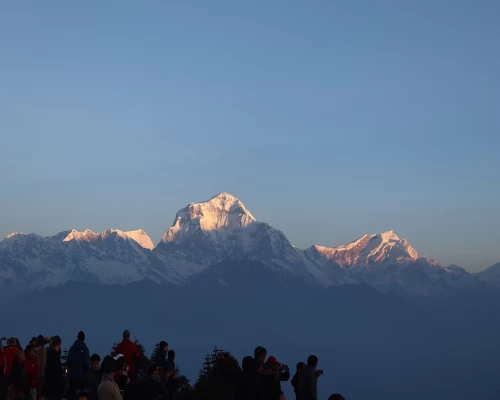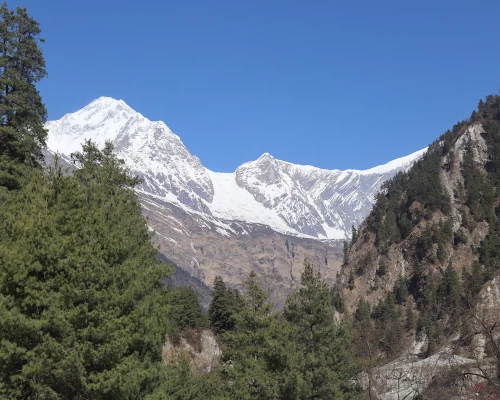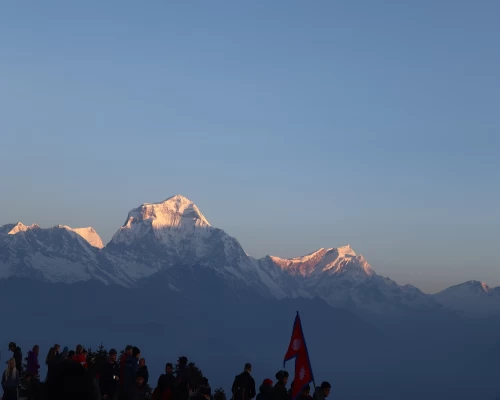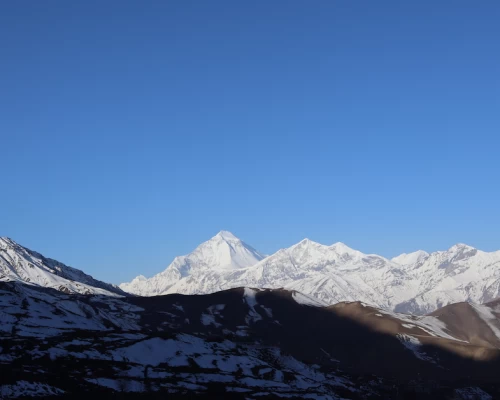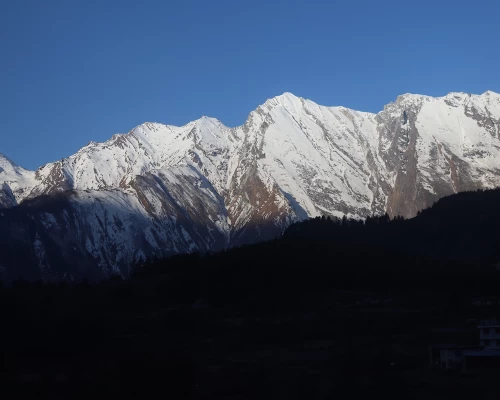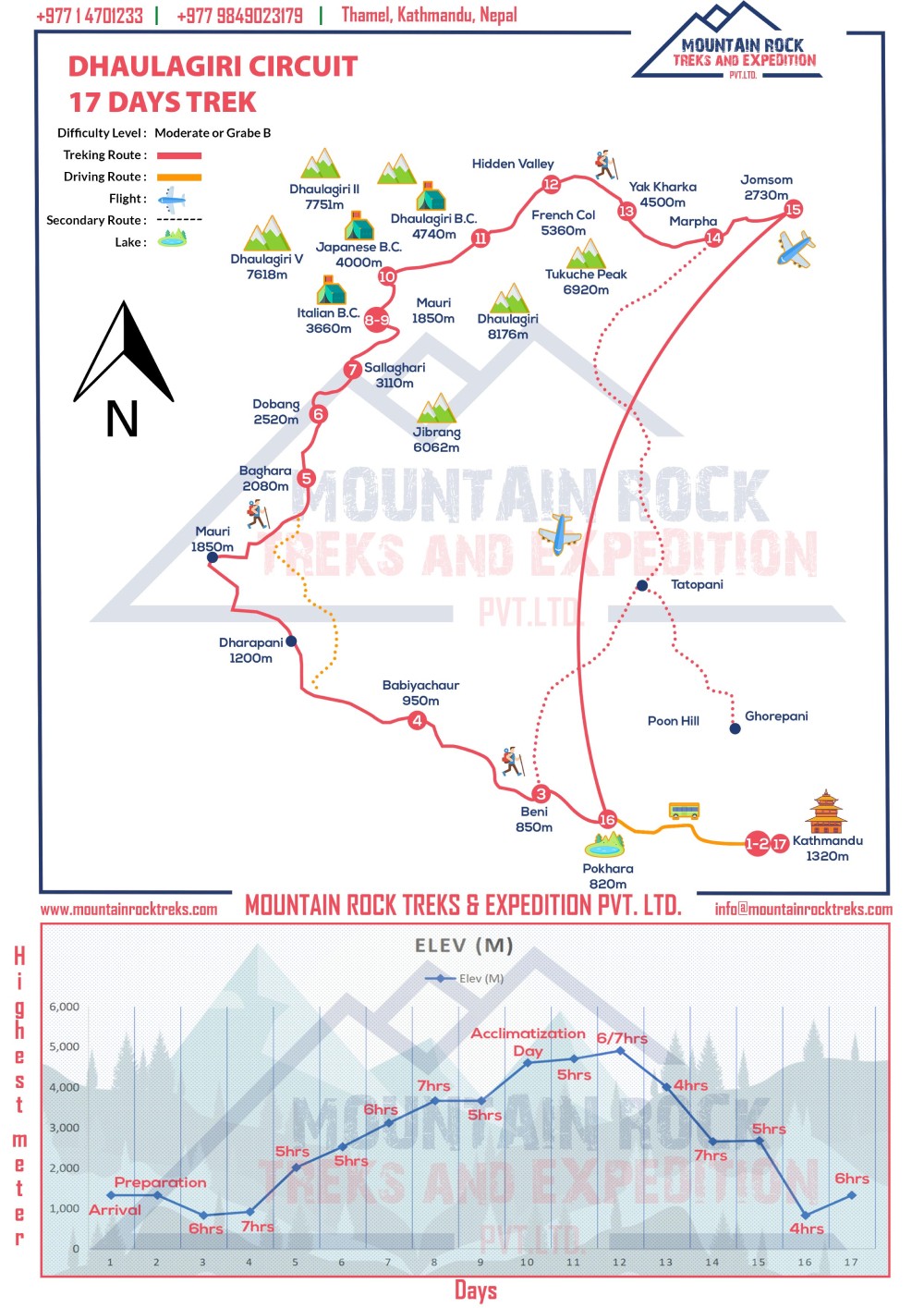Dhaulagiri Circuit Trekking Cost
Numerous trekking companies offer online prices, but they vary depending on the services needed for the Dhaulagiri Circuit Trek. Therefore, you must read all information about the cost of the Dhaulagiri Circuit Trek before deciding on a price. Everything is included when you purchase a trekking package, including a guide, porter, camping gear, food, transportation, and Dhaulagiri Circuit Trek trekking permits.
It would help if you had a standard TIMS Card and ACAP permit for the Dhaulagiri Circuit Trek because it is close to the Annapurna Conservation Area. With no lodge, a faint trail, and a high pass to cross, the Dhaulagiri Circuit is a dangerously remote route. In other words, a successful Dhaulagiri circuit trek requires an experienced trekking guide.
Best Time for Dhaulagiri Circuit Trekking
The most exciting and pleasant Nepal trekking seasons are spring (April–May) and autumn (September–November). It probably also represents the ideal time to complete the Dhaulagiri Circuit Trek. Rhododendrons bloom and lush green forests greet you in the spring. Lower elevations have mildly hot temperatures, and higher elevations have colder temperatures. However, this is the best time of year to see the flowering plants and stunning mountain views. Similar to summer, autumn also offers spectacular views of snow-covered mountains and typically clear skies. The daytime temperatures are very constant; neither extreme is experienced. The walk is pleasant because of the warm, sunny days. However, it can get a little chilly at night and in the morning.
Spring Season
The spring season lasts from March to May. These months mark the beginning of new vegetation throughout the region. The forest path will have flower buds. Because winter has just ended, the valley is gradually regaining its greenery during this season. The weather and temperature are also pleasant at this time. The clear skies allow an incredible view of the mountain peak. In addition, the days are hot, making the walk more accessible.
While the nights are neither hot nor cold, early mornings can be incredible. Therefore, the spring season is the best time to go Dhaulagiri trekking if you enjoy nature.
Autumn Season
September, October, and November are considered autumnal months. The Dhaulagiri Circuit trek is most prevalent during this time of year. The busiest time of the year is now.
During these months, the climate and temperature are favorable. The best way to see the mountains is through the clear skies. Additionally, a walk is made simpler by warm, sunny days. However, the early morning and late night can be a little chilly.
Winter Season
The winter season lasts from December to February. These are the coldest months of the year—the off-season for trekking on the Dhaulagiri circuit. Although the skies are clear, some roads may be closed due to heavy snowfall. Furthermore, as you ascend, the temperature drops. The temperature falls below freezing during this season.
The days, however, are warm, while the nights and early mornings are windy and cold. So be well prepared if you plan to trek during this season.
Monsoon Season
The monsoon season lasts from June to August. These are the least desirable months of the year. In the lower region, this is the season of continuous rainfall. There is little chance of rain in the higher areas.
Flooding and landslides are likely a result of continuous rainfall. As a result, your journey may be delayed or canceled. In addition, the paths are slick and muddy, making your walk thrilling. However, it can be unpleasant because the clouds will appear and obscure the view of the snow-capped peaks.
Accommodations and Food in Dhaulagiri Circuit Trekking
This is a complete camping trek, except for the first and last nights in Beni and Pokhara, where you will stay in hotels. There are no lodges and even no permanent settlements. A camp kitchen will be used to prepare meals, and guides and porters will make sure all the ingredients are carried to ensure high-energy, wholesome, and delicious food.
Staying in a tent with basic meals like soup, noodles, potatoes, vegetables, dal Bhat, fried rice, eggs, etc., is an experience in and of itself. We advise against consuming raw tap water. The bottle of boiled water is filled on this walk by adding water. Additionally, when you are in cities or areas without water access, we advise you to bring cleaning tablets or a filter for water treatment. We do not recommend purchasing single-use plastic bottles.
Dhaulagiri Circuit Trekking Guide and Porters
Trekking on the Dhaulagiri Circuit is unusual. The trek takes you into the wild and remote highlands, through rocky terrain with breathtaking natural beauty. It is a complete camping trek and one of the most dangerous treks. So we advise you to take a guide and porter with you.
The skillful, seasoned, polite, and accommodating hiking guide and crew who can make our days in the mountains run smoothly are the most crucial factors contributing to our hike in Dhaulagiri being successful, enjoyable, and unforgettable. The most qualified and experienced walk leaders will lead you. All of our companies' trekking staff members are carefully chosen based on their relevant experience, personal talent, and leadership prowess. We only hire locals who are sufficiently knowledgeable about the history, geography, flora, and fauna of the region or regions to preserve local communities.
Dhaulagiri Circuit Trekking Difficulty
The Dhaulagiri Circuit Trek is one of Nepal's most challenging camping treks. It would help if you carried everything you'll need for meals during this camping trek. However, up until the Italian base camp, there were some basic accommodations.
It would help if you had good physical stamina, unwavering resolve, and a positive outlook to finish this trek. In the Mustang district, the tour begins in Darbang village (1,110 m) and ends in Marpha village (2,670 m). Long descents, arduous ascents on rocky terrain, high alpine pastures, deserted towns, off-the-beaten-path routes, lateral moraine, icy glaciers, and windy high passes are all features of the trek routes.
You must cross two high passes, French Pass at 5,360 meters and Dhampus Pass at 5,244 meters while hiking the Dhaulagiri circuit. Crossing these passes is difficult but rewarding. You'll spend most of the days on the trek sleeping above 3,500 meters. Therefore, you need to be more cautious about the issue of acute mountain sickness. The Dhaulagiri Trek benefits from prior trekking experience and basic mountaineering abilities.
Acute Sickness and Prevention in Dhaulagiri Circuit Trekking
Mountain sickness is another name for high-altitude sickness. You must be aware of high altitude sickness symptoms because they appear quickly if you hike or climb to a higher elevation. But, again, the air pressure is to blame. Your body needs time to adapt to the change in air pressure when you travel to higher elevations because the air pressure decreases, and there is less oxygen.
The most frequent challenge encountered when climbing Dhaulagiri is altitude sickness. It is typical to experience acute mountain sickness when ascending above 4000 m. This illness typically strikes when you travel above an elevation of 3500 meters.
These are some typical signs of altitude sickness that you might experience: nausea, vomiting, trouble breathing, sleeping problems, headache, dizziness, and difficulty walking on straight paths, among other difficulties. Immediately inform your guide of any symptoms of high altitude sickness, descend to a lower elevation, and take any necessary medications. After telling them, adhere to their instructions. Because if not treated promptly, this could be dangerous.
Our best trekking itinerary includes time for acclimatization and an extra day to ensure success. As a result, you must stroll and rest as necessary before moving forward. It is best to go with a guide because they know where and when you need to acclimate.
Preparations for Dhaulagiri Circuit Trekking
Dhaulagiri Trek is classified as strenuous. It would help if you walked at a high altitude. In some places, the trail can be challenging and steep. Five to six hours a day must be spent walking on barren, rocky ground. You might even need to walk for eight or nine hours on some days. Walking at higher elevations requires more physical effort than walking at lower ones.
You must be both physically and mentally fit to finish your trek. Therefore, having stamina is essential for trekking in the Himalayas.
Preparedness proposed
Exercises Cardiovascular exercises such as running, biking, jogging, and push-ups for three months, 4-5 days a week, before your trip. During strength training, you should also take part in the improvement of your muscular endurance and core strength. The best preparation for this trip is to hike in the hills in various weather conditions.
It is best to speak with your doctor or undergo a complete medical examination before your trek, as many individuals are unaware of their underlying illness. And can learn it after their hiking excursion.
Packing List for Dhaulagiri Circuit Trekking
Before leaving, you must pack the necessary trekking gear. We sincerely hope that it would be impossible for you to transport from one country to another., but some of the required equipment can be rented or purchased in Kathmandu's Thamel area. This essential equipment is suitable for all Nepal trekking seasons, though it may change depending on the time of year and the length of the treks you choose. The Dhaulagiri Circuit Trek requires specialized gear because it is a fully tent-camping trek. Therefore, every piece of equipment should be of high quality, regardless of the season or weather. You can also inquire about the supplies the trekking company provides versus the collections you bring from home.
List of Trekking Equipment (Personal Equipment)
∙ An ice axe
∙ Crampons
∙ Harness
∙ Tape Slings
∙ Trekking Poles
∙ Ascender
∙ Altimeter
∙ Climbing Helmet
∙ U- Lock
∙ Descender/ Eight figure
∙ Ascender
∙ Oxygen
∙ Pest Deterrent
∙ Sleeping Bag
∙ Prusik Rope
∙ Spare batteries and a multi-LED headlamp
∙ First-aid Kid
∙ Feminine Products
Head Wearing
∙ A sun hat
∙ Fleece or wool hat
∙ A Scarf or Bandana
∙ A Scarf or Bandana
Body Wearing
∙ T-shirts
∙ Wool jacket
∙ Down jacket that is thin ∙ Water-resistant jacket
∙ Thermal shirts and bottoms ∙ Gloves
∙ Long-sleeved clothing
Inner Body Wearing
∙ A sports bra
∙ Underwear
Lower Body Wearing
∙ Shorts for hiking
∙ Hiking pants
∙ Waterproof pants
∙ Fleece Pants
Tie the Correct Shoes
∙ Trekking Boots
∙ Trekking Socks
∙ Gaiters
∙ Shoes/Sandals for Camp Bags
∙ Duffle Bag
∙ Rucksack with Rain Cover ∙ Daypack

